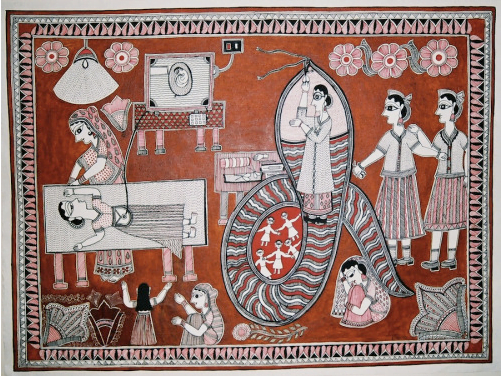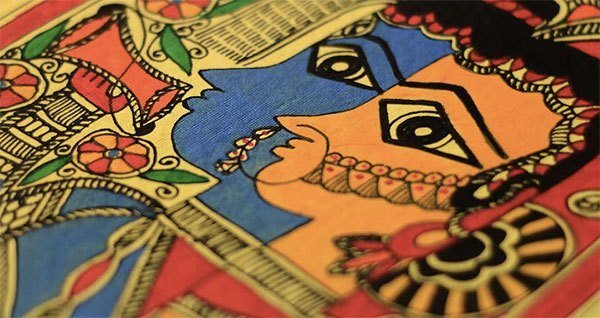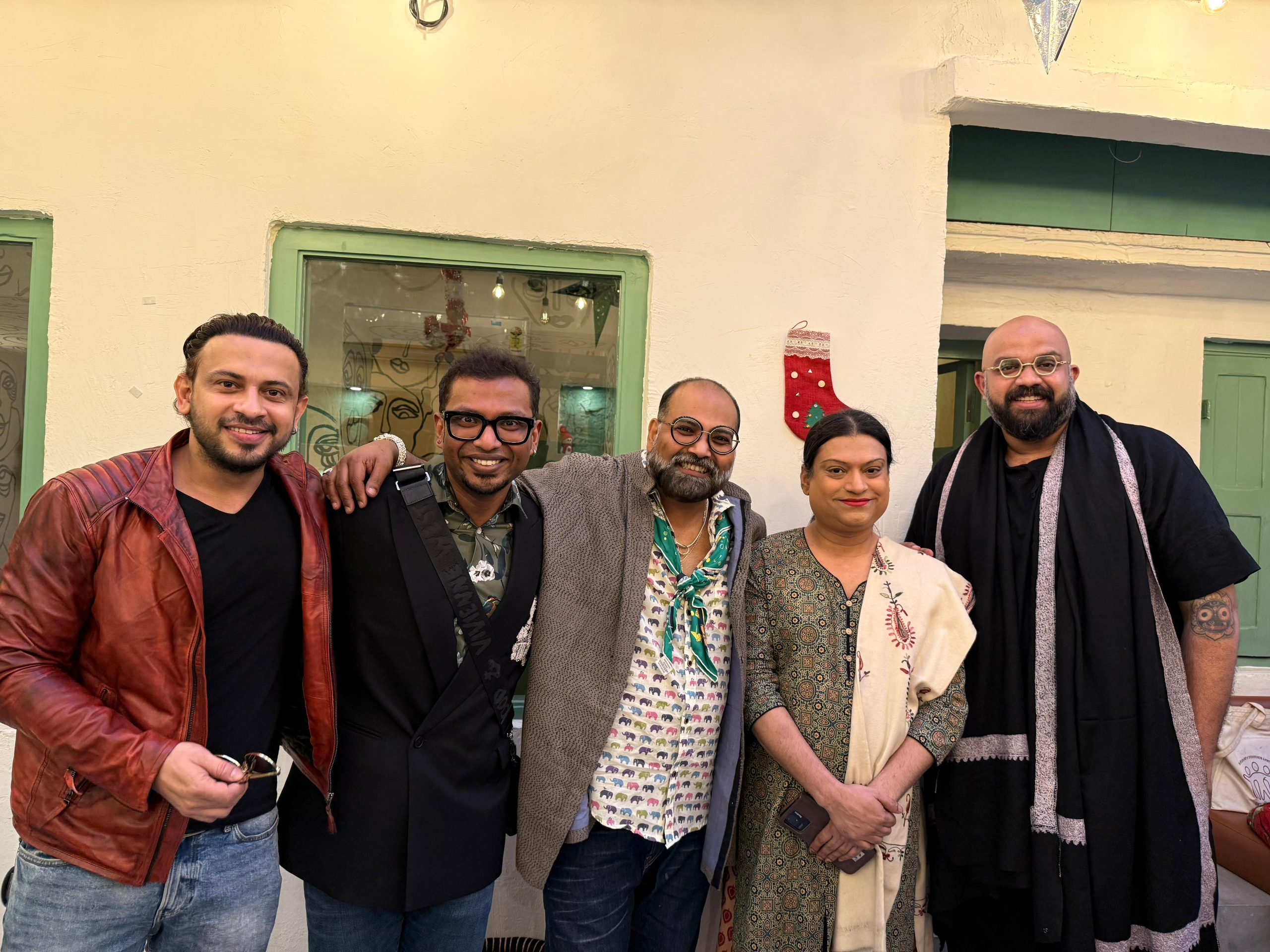Before a child learns to write, s/he picks up a crayon to colour the walls of their home as an expression of their ideas and emotions. Art and craft classes are a medium of evaluation of the psychological well-being and intellectual growth of a person. Art is the most fundamental form of expression vital to the very existence of human beings. Women artists have existed since time immemorial however, they have been denied formal recognition at par with men. A difference in the narrative of art varies when women are subject as opposed to the object of the art work.

Women As “The Painted”
Whenever we talk about artistic activities with respect to women, the mental image of ‘the muse’ is the first to pop up in everyone’s mind. Women were a source of inspiration for male artists in the middle ages. The figurines of dancing girls and Mother Goddesses excavated from the sites of Indus Valley Civilisation – Harappa and Mohenjodaro – are the earliest evidences of the depiction of female body in art. Experts have interpreted such art work as the representation of women having a rich public and private life. Depiction of the female form was soon transferred to temple art. Erotic art inspired by Kamasutra is found in Hindu temples. The Ranakpur Jain Temple in Rajasthan also celebrates this art form in reference with the Digambara tradition.
A female Buddha deity, the form of Tara, is the only representation women receive in Buddhist art. According to Miranda Shaw, a buddhist scholar, ‘motherhood’ is central to the conception of womanhood that is embodied in Tara. She is an embodiment of the traditionally feminine principles – love and protection from fear.
Apart from religious institutions, one of the major patrons of art were the courts of kings and emperors in India. Before 17th century, women were rarely the subject of Mughal artistic endeavours. In contrast to the Mughal artistic traditions, the Rajput Art has depicted women by painting them behind a thin veil, oozing wealth and chastity. Royal habits of women smoking hookah or playing holi is also an explored subject.
Also read: Meet Kanchan Chander: The Artist Who Forces Her Audience To Shed The Male Gaze

Women As The Painter
Domestic life is considered the functional sphere for women in India. Yet, they have carved out a niche for themselves as ‘the artist’. Rani Jha, a Madhubani art teacher, in her interview with The Indian Express, stated that women have often used this art form to express themselves. When child marriage was socially acceptable, child widows existed too. They lived under strict rules of widowhood. They expressed their desire for a wishful life by painting Radha’s clothes in bright red, long hair let loose, and adorned with colourful bangles. Rani Jha herself creates Madhubani art depicting the rampant culture of domestic abuse faced by women in her community, specially forced abortion.
Born in 1945, Nilima Sheikh became a proponent of gender equality by producing works of visual art revolving around women-centric themes. Her most noteworthy work is ‘When Champa Grew Up’ (1984). This is a series of a dozen paintings that depict a true story of a young girl whose life ends in dowry-death at the hands of her in-laws.
Jayasri Burman, an Indian contemporary artist born in 1960, also explores themes surrounding the female form. She does not label herself as a feminist. Yet she confesses that she wishes to see her women content, partaking in the bounties of life. She has choreographed nature in her art works to support her women-centric oeuvre.
Tara Anand decided to take her share of pick with representation of female warriors in history and pop culture. A budding illustrator from Mumbai, Anand decided to start an illustration series ‘I AM NO MAN’. This series is a reiteration of the valuable contribution that women made along the annals of Indian history.
Also read: 5 Desi Women Illustrators We Should Know About

Gendered Aesthetics
Gender informs and influences the creation, history and reception of visual art, and by extension all art forms. Women artists have been an unheard voice in the realm of art. Men have acted as mouthpiece for women for very long. They have overshadowed the perspective of women in art. The voices of women have been unheard. The other side of the coin remains unexplored. Such a tradition is rampant in both east and west. Artemisia Gentileschi’s interpretation of Susanna and the Elders is an apt example which explains this inherent bias. Just like the employment bias against women is resulting in loss of productivity in the world, gendered approach to art and aesthetics is leading to loss in creativity and experiences.
The question is, what can we do to tackle this situation? Art and history museums are not enough. One can take inspiration from the Guerrilla Girls to fight the discrimination and create awareness about the issue. As an influential individual with artistic taste, one can become a patron for the talented female artists, or fund the excavations projects to bring in light the talented women artists of an era forgotten. Women have to stand up for fellow women artists because if we don’t do it, no one else will!
Featured Image Source: Engrave
About the author(s)
Sugandhaa's major areas of interest are aesthetics and feminism. She loves engaging with historical fiction - when she isn't reading it, she is daydreaming about it!






Truly delighted to see the artworks that you have shared in the article. Keep posting! Just visit IndianArtZone from where you get a huge range of famous paintings from Indian Artists.
Thank you! Your website looks great on a cursory glance. I will definetly explore it.